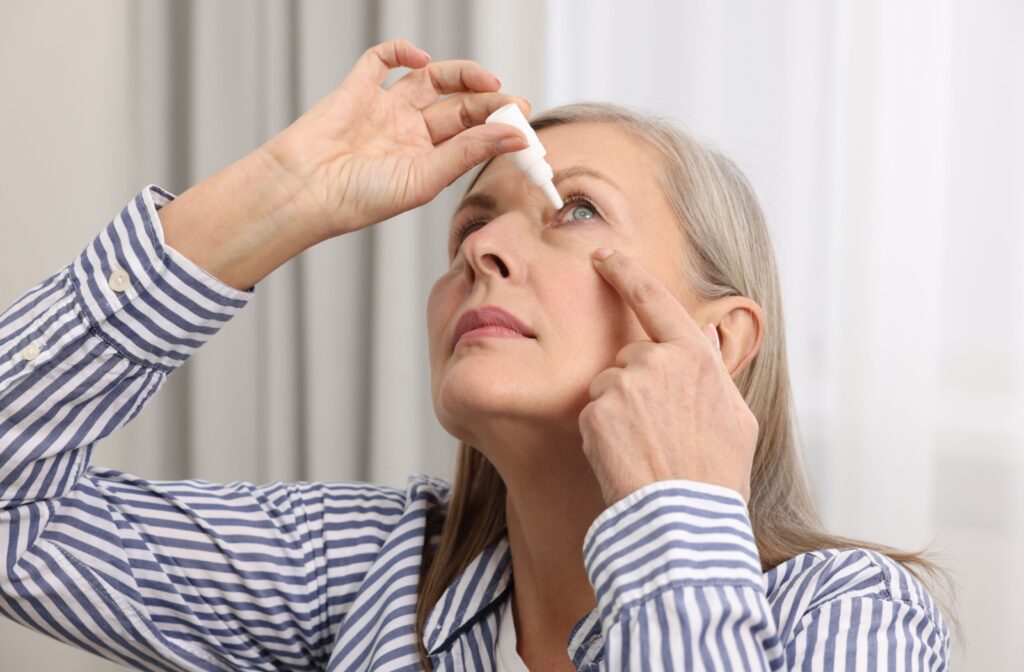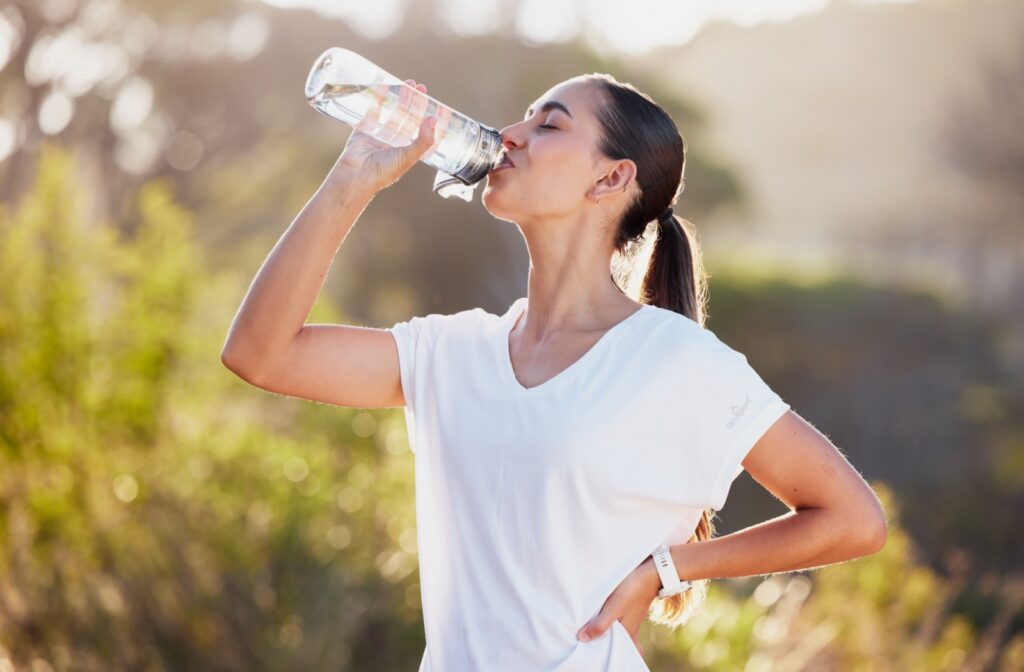Dry, irritated eyes are more than just an inconvenience, they can interfere with your work, concentration, and overall quality of life. If you’ve ever experienced that gritty, stinging sensation, you may have wondered if drinking more water can help with dry eyes.
Staying hydrated can help support healthy tear production and reduce dry eye symptoms, but it may not be a standalone solution.
What Is Dry Eye Disease?
Dry eye disease occurs when your eyes don’t produce enough tears or when the tears you do produce evaporate too quickly. Healthy tears are made up of water, oils, and mucus that work together to protect the surface of your eyes. Without a balanced tear film, your eyes may become dry, red, or uncomfortable.
Dry eye disease is more common than you might think and can be caused by a combination of factors, including:
- Age-related changes in tear production
- Hormonal shifts, particularly during menopause
- Certain medications like antihistamines or antidepressants
- Long screen time, which can reduce your blink rate
- Environmental factors like wind, smoke, or air conditioning
Many people with dry eye don’t realize that their symptoms (burning, watering, blurry vision) are tied to an underlying issue with tear quality or quantity.
How Can You Tell If Your Eyes Are Dehydrated?
Signs of dry eyes can range from mild discomfort to persistent pain. Common symptoms include:
- A scratchy or gritty sensation
- Redness or inflammation
- Light sensitivity
- Blurred vision
- Excessive tearing, which may seem contradictory but is your body’s response to irritation
- Eye fatigue, especially after screen time
If you frequently rub your eyes or rely on artificial tears to get through the day, you may be experiencing chronic dry eye related to dehydration or other factors.
How Drinking Water Helps With Dry Eye
Our bodies are made up of about 60% water, and that includes your eyes. Proper hydration helps your body maintain a stable tear film and keeps your eyes moisturized from the inside out. Tears are primarily made of water, so if you’re not drinking enough, your tear production and quality may be affected.
- Support healthy tear production, helping maintain moisture on the eye surface
- Improve tear film composition, ensuring your tears include the right balance of water, oil, and mucus
- Flush toxins and reduce inflammation, which supports overall eye health
- Reduce eye strain and fatigue, especially if you also use screens for long periods
That said, drinking more water isn’t a cure-all. Dry eye disease is often multifactorial, meaning other causes like hormonal changes or environmental stressors may also need to be addressed.
How Much Water Should You Drink for Dry Eyes?
The general recommendation is to drink eight 8-ounce glasses of water a day. But if you’re experiencing dry eyes, you might benefit from increasing that amount slightly.
A more personalized guideline is to aim for half your body weight in ounces of water per day. So, if you weigh 160 pounds, aim to drink about 80 ounces daily. On hot days or after exercise, you may need even more.
A few hydration tips:
- Carry a water bottle with you throughout the day
- Set reminders on your phone or use a hydration tracking app
- Eat water-rich foods like cucumbers, oranges, and watermelon
- Avoid excessive caffeine and alcohol, as these can dehydrate you
Hydrating Beyond Just Water
You don’t have to rely on plain water alone. Many foods and beverages can help you stay hydrated while also providing eye-friendly nutrients.
Hydrating Foods to Consider
- Cucumbers
- Tomatoes
- Lettuce
- Strawberries
- Cantaloupe
Beverages that Help with Hydration
- Herbal teas (peppermint, rooibos, chamomile)
- Infused water with lemon, mint, or berries
- Electrolyte drinks (in moderation and with low sugar content)
Other Ways to Relieve Dry Eye
Hydration plays an important role in dry eye relief, but it’s only part of the solution. If drinking more water doesn’t provide full relief, consider these additional strategies:
- Use artificial tears: Choose preservative-free lubricating drops that are safe for frequent use.
- Blink more often: Especially when using digital devices. Try the 20-20-20 rule—every 20 minutes, look at something 20 feet away for 20 seconds.
- Use a humidifier: Especially during dry winter months or in air-conditioned environments.
- Wear wraparound sunglasses: They help protect your eyes from wind and sun, both of which can dry out your tear film.
- Apply warm compresses: These can help stimulate oil glands in your eyelids, improving the quality of your tears.
- Talk to an eye doctor: Treatments like prescription eye drops, punctal plugs, or light-based therapies may be recommended for more severe cases.

Get Dry Eye Support
Drinking water can be a simple and beneficial step toward relieving dry eyes, but it’s not always the only answer. Because dry eye disease can stem from multiple causes, it’s important to look at the big picture, including hydration, screen habits, environment, and eye health.
At Total Vision Pasadena in Pasadena, CA, we’re here to help you find lasting relief. Our team can assess your symptoms, determine the root cause of your dry eyes, and recommend personalized treatments to help you feel better every day. Contact us today to schedule an eye exam and discover a plan that works for you.




